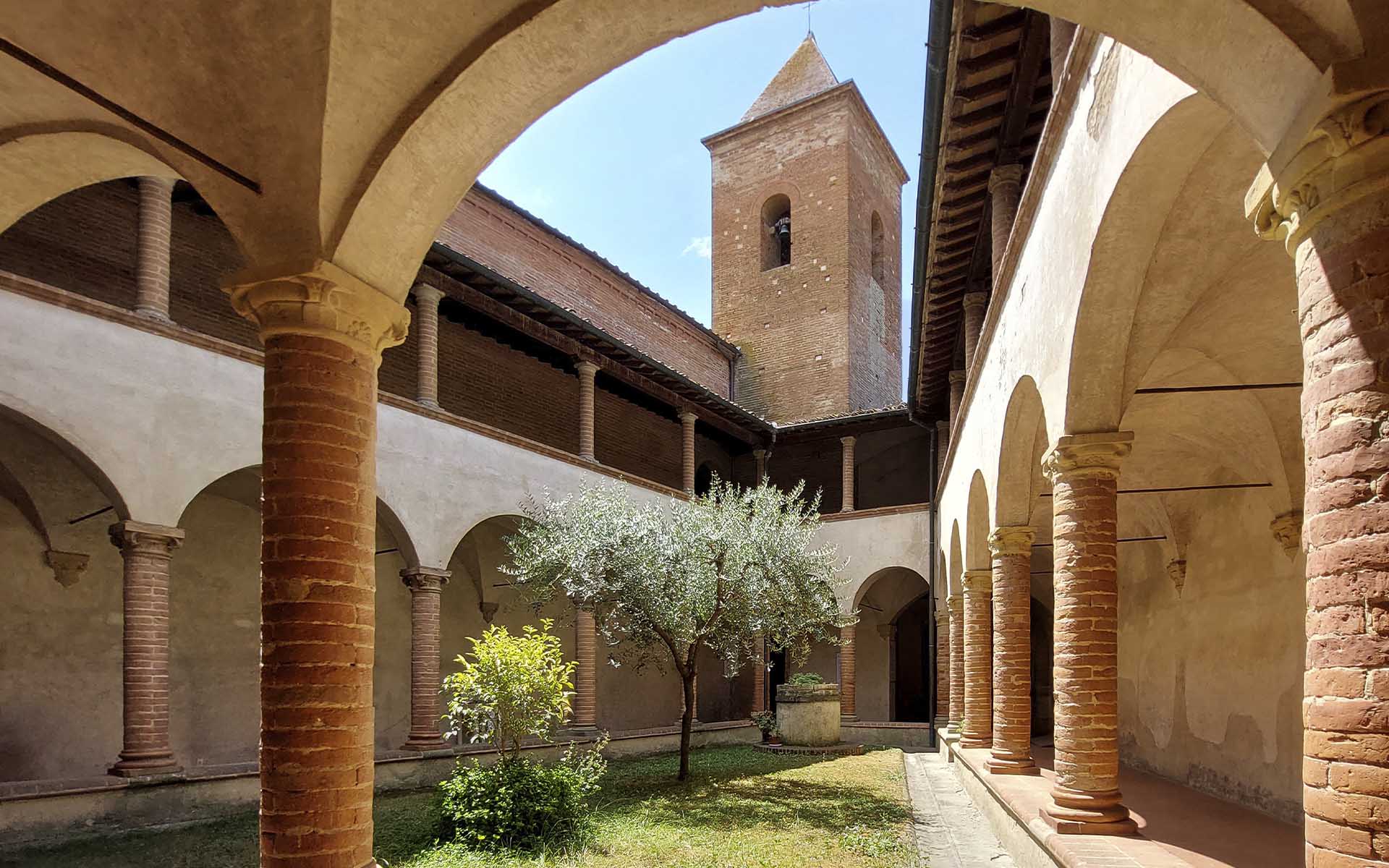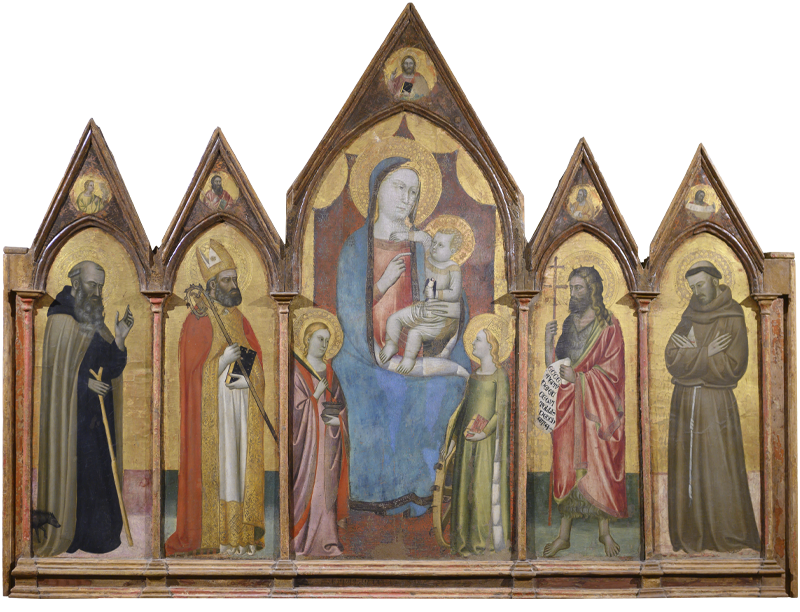The pentaptych depicts, in the central compartment, the enthroned Madonna and Child with Saint Lucy with a lighted lantern and Catherine of Alexandria with a cogwheel, an attribute that refers to her martyrdom. The Virgin, seated frontally on a throne covered with a carmine-red arabesque cloth, is caught looking lovingly at her Son, pointing to him with the index finger of her right hand. The Child holds a goldfinch in his left hand, alluding to his impending martyrdom, while with his right hand he barely holds the Virgin’s robe, marking their affectionate relationship. In the side compartments are, facing the Madonna and Child the Saints Anthony Abbot with the boar and tau, his attributes, worshipped by pilgrims afflicted with wounds from the long journey, Nicholas of Bari, John the Baptist dressed in camel skins to enshrine the political relationship of the Certaldo territory with Florence, and, lastly, Francis in the brown robe. The cusps depict Christ blessing in the center, sided by four Prophets. Along the lower part of the frame are preserved fragments of an inscription now almost entirely lost, of which the Roman numerals “MCCC” remain legible in the center, 1357 according to Carrocci, a date that actually coincides with the one shown on the altar where the polyptych stood, in which traces of the emblem of the Belforti di Petrognano can be seen.
We owe to Richard Offner the attribution of the work to the so-called Maestro dell’Altare di Fabriano, later identified by Roberto Longhi with Puccio di Simone, first a pupil and later a collaborator of Bernardo Daddi, a talented populariser of post-Giottesque Florentine culture. Marking the stylistic distance with the master was Puccio’s stay in Fabriano alongside Allegretto Nuzi, with whom he matured a more distinctly Gothic language that is expressed in his Florentine works executed immediately after his return to Florence by 1357, a date that coincides with the execution of the polyptych of Petrognano where the long, slender figures are Gothic, almost imperceptible in the space of a measured and suspended composition, particularly the figure of St. Anthony that emulates the one of the National Gallery in Washington triptych of his friend from Fabriano.
Since the beginning of the twentieth century, experts have been denouncing the poor state of conservation of the polyptych due to its poor state of preservation and because of the frequent repainting and cleaning it underwent in the past, with the use of such aggressive substances that greatly impoverished the pictorial surface, which is still very badly damaged despite the restorations carried out in 1998 and 2000.




